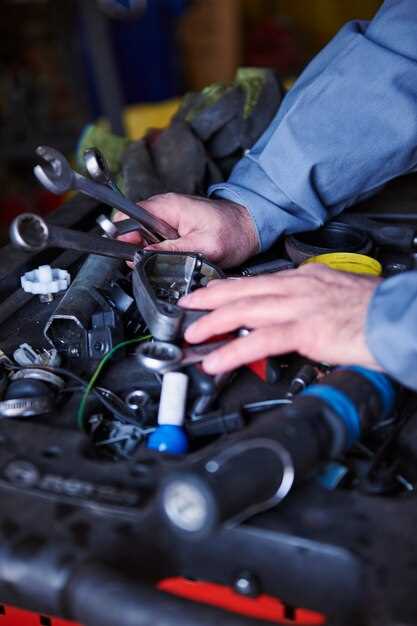
Maintaining your BMW in peak condition requires regular attention to its essential fluids. These diy tasks not only enhance your vehicle’s performance but also prolong its lifespan. Keeping the proper levels of fluids such as engine oil, coolant, transmission fluid, and brake fluid is crucial for ensuring that your BMW operates efficiently.
Regularly checking and topping off these fluids is a straightforward process that any BMW owner can master. It’s not just about filling up the tanks; understanding the importance of each fluid type and the role it plays in your vehicle’s performance is key. This article will guide you through the necessary steps to check and maintain your BMW’s fluids, empowering you to take charge of your car’s health.
In a world where every second counts, ensuring your BMW runs smoothly can save you time and money in the long run. By taking the initiative to perform these simple diy checks, you not only avoid costly repairs but also enjoy a more reliable driving experience. Get ready to dive into the world of BMW fluids and elevate your automotive knowledge!
How to Identify and Check BMW Engine Oil Levels Accurately

Maintaining optimal engine oil levels is crucial for the performance and longevity of your BMW. Here’s how to accurately identify and check your engine oil levels in a few simple steps.
1. Gather Your Supplies
Before starting your DIY oil check, ensure you have the necessary tools: a clean rag or paper towel and the correct engine oil recommended by BMW for your specific model.
2. Ensure the Engine is Cool
For an accurate reading, check the oil levels when the engine has cooled down and is parked on a level surface. This ensures that the oil has settled properly in the oil pan.
3. Locate the Dipstick
Open the hood of your BMW and locate the oil dipstick. It is usually marked with a bright handle for easy visibility. Make sure the area around the dipstick is clean before removing it to avoid contamination.
4. Remove and Clean the Dipstick
Pull the dipstick out carefully and wipe it clean with your rag or paper towel. This step removes any old oil and provides a clear reading for the next step.
5. Check the Oil Level
Reinsert the clean dipstick back into the tube and remove it again. This time, observe the oil level on the dipstick. BMW dipsticks usually have markings indicating optimal, low, and safe levels. Ensure the oil level is within the recommended range.
6. Inspect Oil Condition
While checking the level, also pay attention to the oil’s color and texture. Healthy oil should be amber in color with a smooth consistency. If the oil appears dark and gritty, it may need to be changed.
7. Top Off If Necessary
If the oil level is low, use the recommended engine oil for your BMW to top it off. Pour the oil into the designated opening carefully, checking the levels frequently to avoid overfilling.
8. Recheck and Finalize
After adding oil, wait a few minutes and recheck the dipstick to ensure the level is now within the proper range. Always replace the dipstick securely back into its tube before closing the hood.
Regularly checking and maintaining your BMW’s engine oil levels ensures smooth operation and optimal performance, prolonging the lifespan of your engine. This DIY process is simple and essential for every BMW owner.
Steps to Inspect and Refill BMW Coolant and Antifreeze

Maintaining the cooling system in your BMW is essential for optimal performance. Regularly inspecting and refilling coolant and antifreeze can help prevent engine overheating and ensure longevity. Follow these diy steps to manage your BMW’s coolant levels effectively.
1. Gather Necessary Tools and Supplies
Before starting, make sure you have the following items:
– BMW-approved coolant
– A clean funnel
– A rag for spills
– Safety gloves
– A flashlight (for better visibility)
2. Ensure Engine is Cool
Always check coolant levels when the engine is cool to avoid burns from hot coolant or steam. Wait at least 30 minutes after turning off the engine before proceeding.
3. Locate the Coolant Reservoir
Open the hood and locate the coolant reservoir. It’s typically a translucent plastic tank marked with “coolant” or has a symbol illustrating a thermometer. Use a flashlight if necessary to get a clear view.
4. Inspect Current Coolant Level
The coolant reservoir will have minimum and maximum level markers on the side. Check the level to determine if it’s below the minimum mark. If it is, you need to top it off.
5. Select Appropriate Coolant
Ensure you use BMW-approved coolant that meets the specifications for your model. Using the wrong type can damage the engine or cooling system.
6. Refill Coolant
Using a clean funnel, slowly pour the coolant into the reservoir until it reaches the maximum mark. Avoid overfilling, as this could lead to leaks or overflow when the engine heats up.
7. Check for Leaks
After refilling, inspect around the reservoir and hoses for any visible leaks. If you notice any, address the issue before driving.
8. Start the Engine
Once you have completed the refill, start the engine and let it run for a few minutes. Check the temperature gauge and watch for any warning lights on the dashboard.
9. Dispose of Old Coolant Properly
If you have leftover coolant or if you’ve drained any, be sure to dispose of it in accordance with local regulations. Do not pour it down the drain or in the trash.
Regular inspection and refilling of coolant and antifreeze can greatly enhance your BMW’s performance and reliability. This service task is simple to follow and can help you avoid costly repairs in the future.
Checking and Maintaining Brake Fluid for Safe Driving
Brake fluid is a critical fluid that plays a vital role in the safety and performance of your BMW. Regularly checking and maintaining the brake fluid is essential for ensuring optimal braking performance and safe driving conditions.
To begin, locate the brake fluid reservoir, which is typically found near the back of the engine bay. Ensure the vehicle is on a level surface and the engine is cool before checking. The fluid should be clear or light amber; any signs of discoloration or contamination may indicate a need for service.
It is important to check the fluid level against the markings on the reservoir. If the level is low, it might suggest leaks in the braking system or worn brake pads, both of which require immediate attention. Always top off with the appropriate type of brake fluid as specified in your owner’s manual, as mixing different types can lead to severe brake system damage.
In addition to regular checks, consider replacing the brake fluid every two years or as recommended by your BMW service schedule. Brake fluid absorbs moisture over time, which can lower its boiling point and lead to brake failure. Flushing the system with new fluid not only enhances performance but also prolongs the lifespan of brake components.
Finally, if you experience any unusual brake behavior, such as spongy pedals or diminished stopping power, seek professional service immediately. Maintaining your brake fluid ensures that your BMW remains responsive and reliable, keeping you and your passengers safe on the road.
